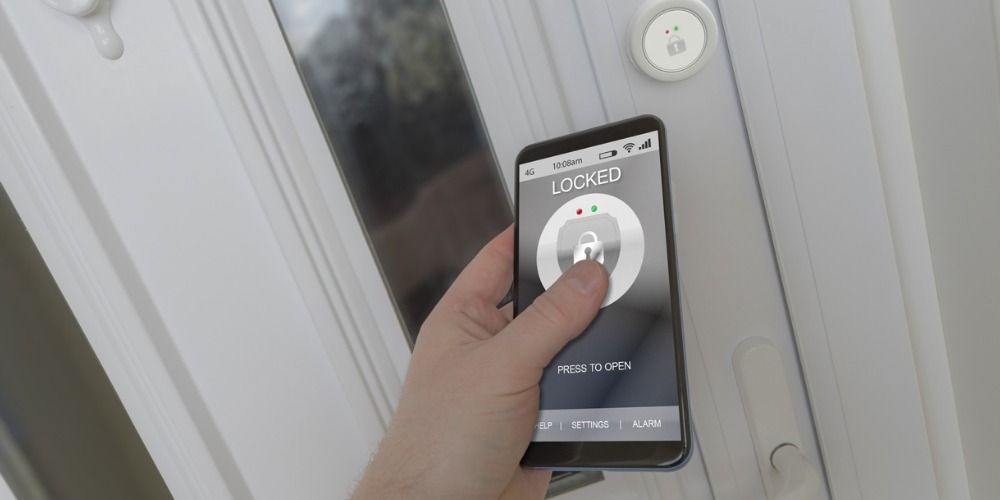Your phone is smart, and your home can be too. The Internet of Things (IoT) gives consumers a new level of convenience, and greater ease protecting their home and assets.
IoT refers to the growing network of devices that can connect with the Internet and therefore communicate with each other.
Through this connectivity, you can control your home from your mobile phone, tablet or PC. Basic examples of interactive home solutions include:
- Arm or disarm alarm system.
- Turn on/off lights and household appliances.
- Close or open garage door.
- Adjust heating and cooling to preference.
But what happens if your device is hacked?
Intruders could gain access into the very mobile controls that allow you to manage and protect your home. Here are some best practices to protect your devices, and safeguard your home against access.
Password Please
Remove auto-login features, and set up password-protected entry into devices and the apps within them. This is your first step to defend your personal information and data. Ensure passwords are difficult to guess or decrypt with these tips:
- Create passwords with a minimum of 15 characters, including numbers and special characters. According to CEO Joe Ross of CSID, a global identity protection company, “a 10-character password can be cracked using standard tools within a calendar week. A hacker using the same ‘brute-force’ tactics would need 1.49 million centuries to crack a 15-character password.”
- Avoid using easily identifiable information, such as your name or birth date.
- Do not use the same password across programs and devices. (Consider investing in a password manager to keep track.)
- Change your passwords about once every three months.
Adjust the amount of time your device can be idle before requiring a password for maximum protection. For example, once your computer activates its screen saver, it should require the user to log in to access the previous screen. Cornell University IT recommends having an automatic lock on your computer after 15 minutes of inactivity.
Enable Wiping Capabilities
Features and applications, such as Find my iPhone, are helpful if your device is lost or stolen. Many of these programs allow you to remotely wipe data from your devices, returning your phone to factory settings, if necessary. This can keep intruders from accessing your data, information and applications if your device goes missing.
Similarly, remote wipe is also available on most smartphones in response to repetitive incorrect password input. All you need to do is enable these settings.
Protect Against Hackers
Viruses that leave your devices vulnerable can often be found in un-trustworthy websites, unsolicited advertisements, popups or emails. As a first step, do not download content onto your device unless you are certain it’s derived from a trustworthy source.
Secondly, ensure devices are locked down with reputable programs to guard against damaging content or hackers. Here’s a breakdown of the software you’ll need:
- Antivirus software is designed to detect and destroy computer viruses.
- Anti-malware software prevents, detects and remediates malicious programming on devices and IT systems.
- Firewalls are designed to block unauthorized access to your device or network, while permitting you to communicate outwardly.
- Password protect your server/router. Do not leave your Internet connection open for outside access. Password-protect your Wi Fi and only give the password to family members and trusted friends.
How do you keep your home and technology safe from hackers? Share your tips in the comments below!
Image Source: Perspecsys Photos



